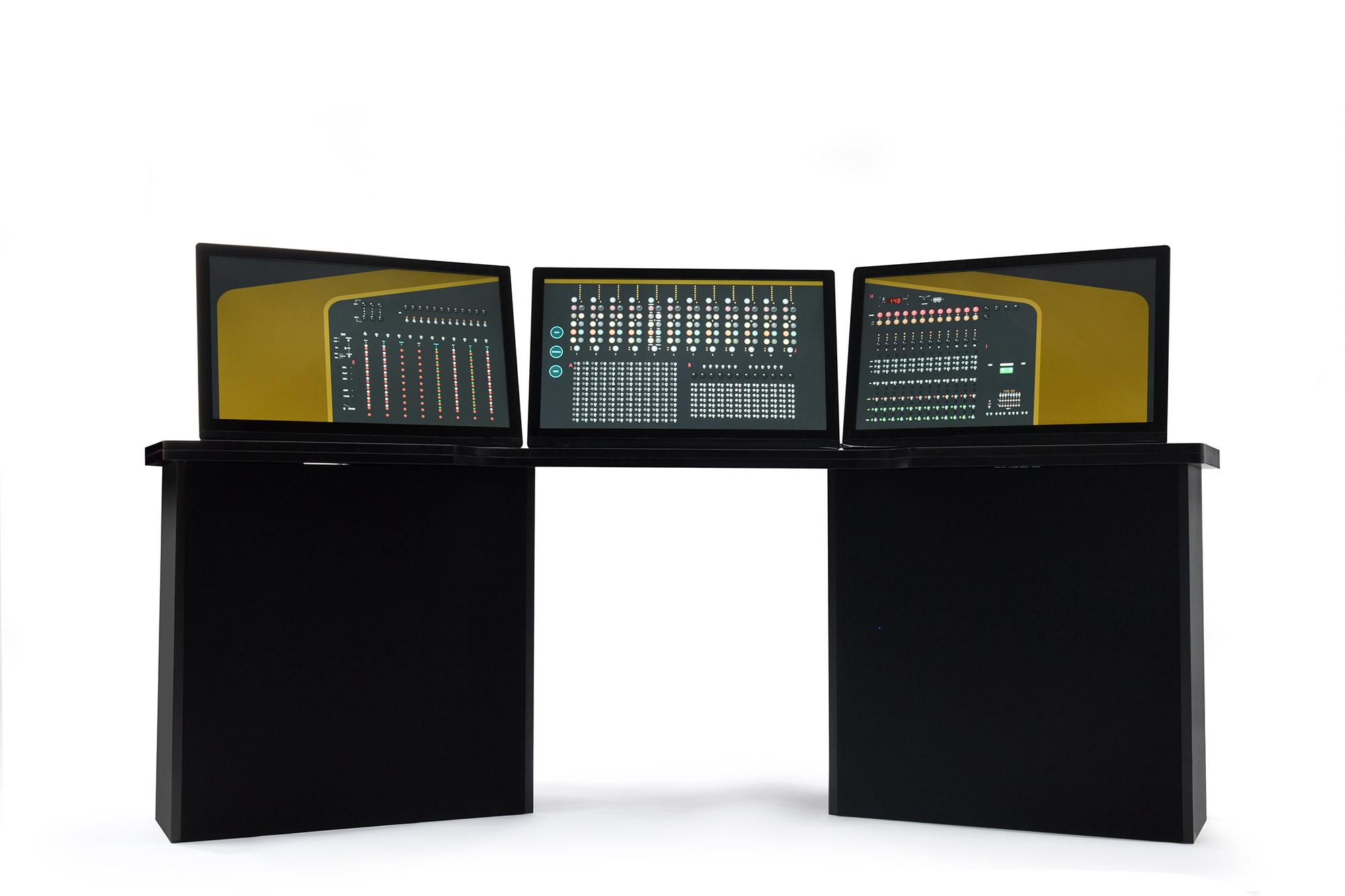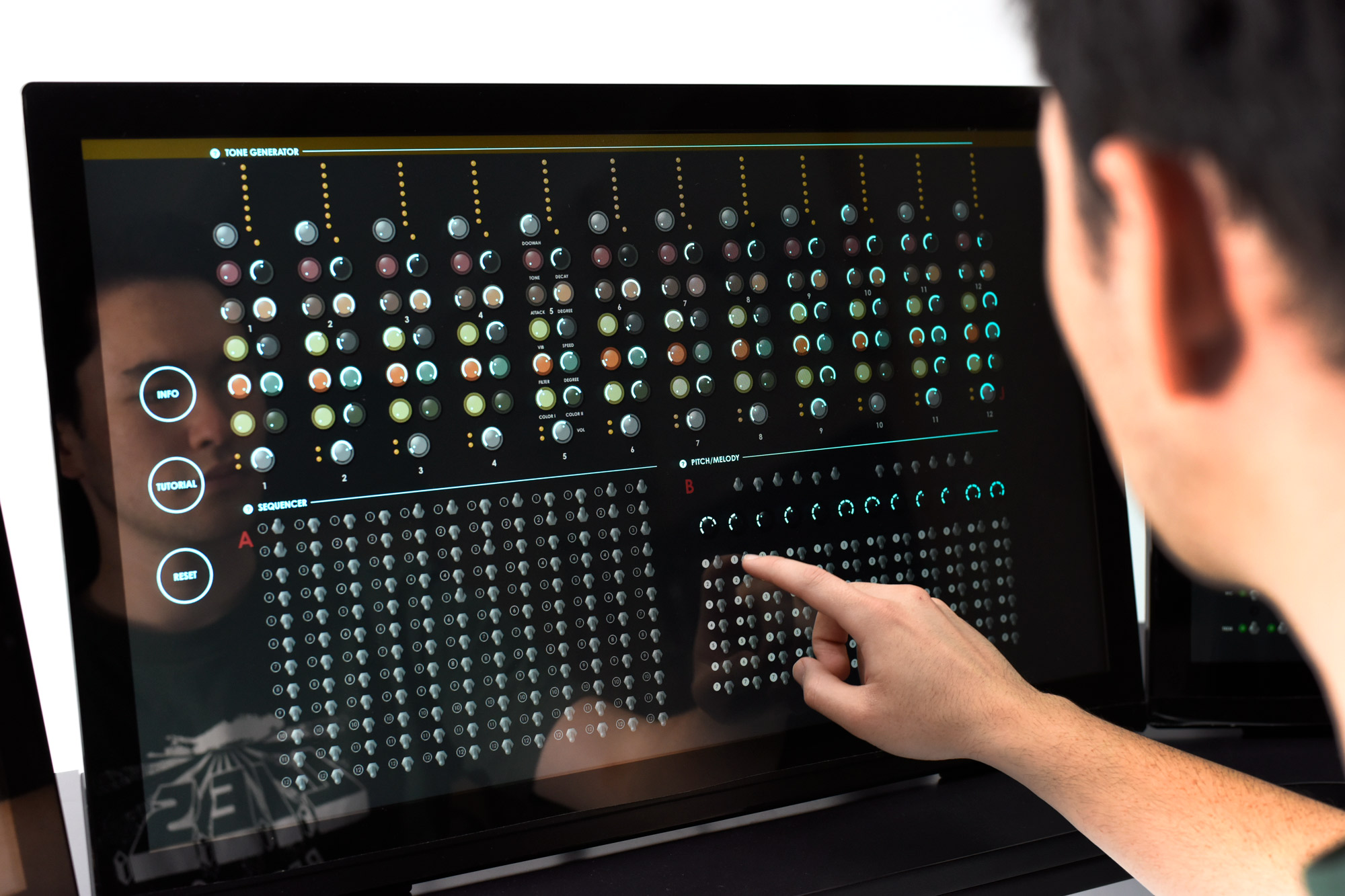Re-imagined the Electronium - Raymond Scott’s instantaneous performance-composition machine.
Raymond Scott was an American bandleader, pianist, engineer and inventor who is widely renowned as an early pioneer in electronic music and instruments. During his lifetime he served as director of Motown’s Electronic Music Research and Development from 1971-1977, and his late 1930’s jazz melodies have been widely heard through Warner Bros cartoons. Scott was the first person to build an electronic sequencer and is widely seen as a forefather of electronic and ambient music.

The research and development were challenging for the team, as they had to decipher the inner workings of the Electronium. Always wary that contemporaries could steal his work, Scott was extremely secretive and deliberately avoided writing detailed documentation on his inventions. Various parts and cabling were removed from the machine for future projects, leaving only a series of recordings behind.
Luckily, the team was able to acquire recently unearthed and unpublished schematics, notes and signal flows to help them understand the methods behind Scott’s creation. After weeks of research, they were able to piece together a general picture of how this complex machine worked and sought out programmers who could implement the software and crucially, the AI function.
To program the AI part of the Electronium, the team collaborated with Counterpoint - a creative studio specialising in artificial intelligence and generative systems. Counterpoint used Google Magenta’s AI software, utilising deep learning code and neural networks trained on Bach chorales to understand relationships between contrapuntal voices, and adapt intelligently to new situations. As a result of its Baroque influence, the results are often extremely idiosyncratic as the code tries to work around a more ‘pop’ sensibility offered in the major scale of the Electronium.
A unique blending of human and machine creativity, the Electronium has huge potential for those wanting to sit down and engage seriously with it as a compositional tool. The generative aspect is there to promote creativity, and its contrapuntal function can assist in developing and accompanying player ideas.


For beginners, the team have also added a tutorial that guides first-time players to quick results involving the AI. Though the machine was conceptualised in 1959, it still poses questions about authenticity, the nature of creativity, and the man/machine relationship that is increasingly vital in the present day. We hope that bringing the Electronium to life contributes to the current conversation about the qualities of AI, and how it is becoming increasingly common to implement intelligent technology in all aspects of our lives.
